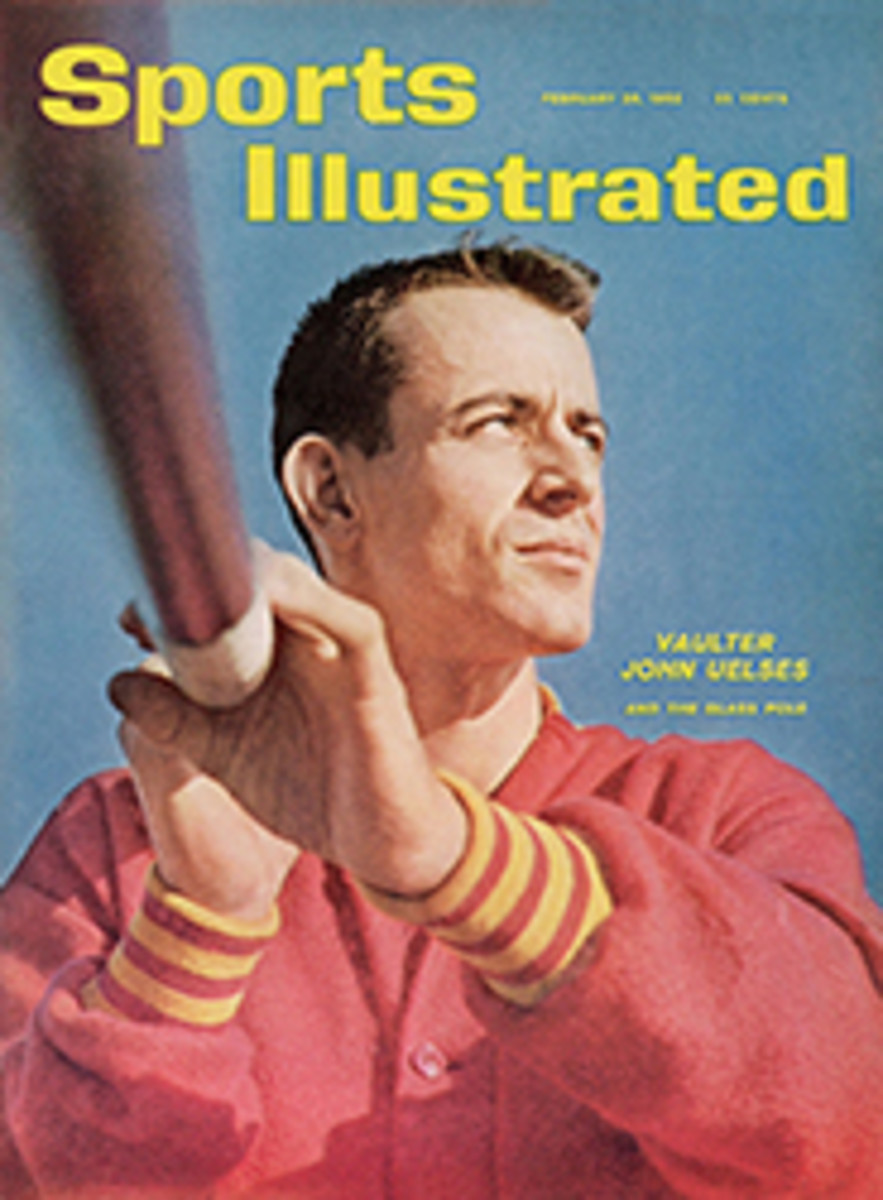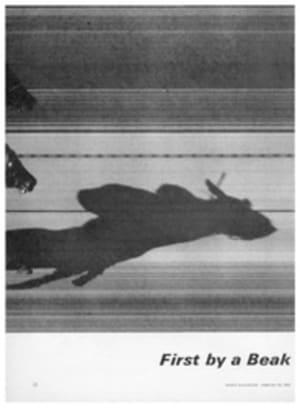
The pot of gold at the foot of the mountain
"The world's first professional ski racing championships were over and Aspen's omnipresent snowman, Friedl Pfeifer, had finished dispensing the loot: a Mercury Comet automobile to Anderl Molterer, $1,200 to Ernst Hinterseer, $650 to Christian Pravda, $540 to Othmar Schneider, lesser amounts to a list of racers that included two Americans, Marvin Moriarity and Max Marolt, who had struggled valiantly to stem the Austrian avalanche. Then Pfeifer introduced his partner, Fred Iselin.
Iselin is a man of few comprehensible words. "Maybe this not much," Fred said, in his Austrian version of English, "but I look at day to come. A racer whooshes up to finish line and stops short. What is he doing, you ask. I tell you what is he doing. He stops to figure out income tax bracket before he crosses line."
If Iselin is right, and already there are indications that he may be, then the International Professional Ski Racers Association (IPSRA) will be successful beyond even the dreams of Friedl Pfeifer, who for a long time dreamed alone. In a little over a year IPSRA has brought to solvency and saved from a ski instructor's fate some of the most brilliant Alpine racers of the last decade. IPSRA has also brought pleasure and excitement and entertainment to ski enthusiasts from California to Quebec, and this is important to Pfeifer but not so important as the fact that it has afforded the racers themselves a chance to cash in on their wondrous skills once the brief moments of Olympic and FIS glory are over.
Last year, beginning with a small race won by Christian Pravda on Aspen's Buttermilk Mountain (SI, Feb. 13, 1961), IPSRA conducted six races and permitted its members to compete in an outside-sponsored Canadian affair. The total prize money amounted to about $15,000, just enough to encourage Pfeifer and his troupe to keep reaching for more. By winning two races and finishing second several times last year, Molterer earned more than $4,000, or almost twice his salary for teaching tourists to snowplow down Aspen Mountain. This year, with just half the season's 10 scheduled meetings completed, Molterer has won $4,500 in cash or prizes alone and can hardly be blamed for feeling that he has slipped through a slalom gate into a pot of gold. This year he also receives $3,000 for using and endorsing Kneissl skis and a share of the profits from Aspen Skiwear, a hustling, revitalized company that makes the garish racing costume he wears. In all, Anderl Molterer, who once used to ski for medals and love and ski wax, stands to accumulate more than $15,000 out of pro racing this season, and some of his rivals—Hinter-seer, Pravda and Pepi Gramshammer—will not be too far behind. Molterer's rewarding life as a pro does not compare too favorably with the careers of Mickey Mantle or Arnold Palmer, perhaps, but it beats chopping wood in Kitzb√ºhel.
"Skiing for money," says Molterer, "is more fun than skiing for medals. Even if it does hurt more when you fall down."
Through a 10-year amateur career, Molterer was always on the verge of becoming the world's greatest skier—except that he kept falling down. A small, trim man of 5 feet 6½ inches and 135 pounds, with dazzling white hair and a large nose, he won every great and famous race in Europe at one time or another and virtually every Olympic and FIS world championship medal except the ones of gold. "He was a wild man," says Othmar Schneider, who coached the Austrian Alpine team after winning a gold medal at Oslo in 1952 for himself. "Now Anderl is 30 years old and the experience has taught him caution. He is still a great skier, better than ever before, and he has learned when to go slow."
The world's first pro ski racing championships in Aspen consisted of a slalom race on Friday and a giant slalom on Sunday. On Friday, in a tight, turquoise racing suit, Molterer came flashing down the steep tricky old FIS slalom course on his first run in 1:04.9 to leave Hinterseer, the 1960 Squaw Valley Olympic slalom champion, .6 second behind. Gramshammer, a 29-year-old Sun Valley instructor who won last year's two final pro races and also the first two this season, was more than two seconds farther back. On his second run Molterer eased up just a little; he skied the course in 1:07.3, while Hinterseer, driving desperately to catch up, crossed the line in 1:06.9. But the combined time for the two runs left Hinterseer still .2 second back and gave Molterer the first world title, pro or amateur, he had ever won. When Gramshammer fell on his second run, Schneider, the stylist, finished third,' and old Christian Pravda, still a tiger at 35, came in fourth. Roger Staub, the happy warrior who won the giant slalom gold medal at Squaw Valley for Switzerland, finished fifth.
It rained on Friday night, an almost unheard-of midwinter occurrence in Aspen. By racetime on Sunday, the steep, tortuous giant slalom course that Pfeifer had set was softened under a blistering sun. Perhaps it was well, else no one would have made it down alive. More than 3,500 people lined the mountain when Hinterseer pushed off ahead of 20 other racers to complete the first run in 1:02.3. When all the others had come down, Hinterseer was still ahead; Pravda was second in 1:02.5, Molterer was third in 1:03.7, Moriarity fourth in 1:06.3. Schneider lost too much time with a fall; Staub and Gramshammer and half a dozen others fell.
Dramatic show
With the starting order reversed for the second run, however, it was Molterer who came down first over the repacked snow, and Pfeifer said later that he had never seen Molterer—or perhaps anyone else—ski so dramatically well. Diving through the gates, careening over the bumps, sending up small explosions of dry snow as he edged and bobbed and weaved down the long, punishing course, Molterer sailed past the beam of the photoelectric timer at the finish line in 1:00.3. The crowd roared and the hearts of Hinterseer and Pravda hit their boots. Pravda came down in 1:03.1, Hinterseer in 1:03 but neither of these magnificent efforts was enough. Molterer was a world champion again. The photographers blinked their eyes at the dazzling magenta racing suit and recorded the moment for posterity.
"Do you have a driver's license, Anderl?" Pfeifer asked. Molterer nodded and grinned. Pfeifer gave him the keys to the new car. That night Molterer found a parking ticket stuck to the windshield outside the Hotel Jerome. He only grinned again.
IPSRA, despite its success to date, still has a long way to go. There are problems: injuries, bad weather, too many Austrians, not enough money. Pfeifer had hoped for strong backing from within the ski industry. Aside from Head Ski Company and White Stag, which contributed $3,000 apiece last year and added $500 apiece for each race, he has been disappointed. The remainder of the $3,000 guarantee for each pro race must come from the host ski area, which may or may not get its money back from the gate receipts.
"We had over 5,000 people in two days last year at Stevens Pass, which is just 80 miles from Seattle," Pfeifer says, "and this year there were 11,500 for the two days of racing at Heavenly Valley. But everything went wrong at Sugar Bowl: 70-mile-an-hour winds, three feet of snow, temperatures 15° below zero. Our timing gear broke down and the Magic Carpet tramway into the valley wouldn't run. We were lucky to have 400 there." Yet Pfeifer knows that although IPSRA may prosper for awhile even without great crowds, eventually admissions—and television—must carry most of the load.
Even before the 1962 season began, two of the tour's top attractions were lost in training accidents, the fabulous Stein Eriksen and graceful Tony Spiss, both with torn Achilles tendons. Pfeifer was fortunate to be able to replace one with Staub, the other with Hinterseer. "We still have too many Austrians," Pfeifer admits, "but most of the good racers of the past 10 years have been Austrian, so what can we do? Next year we hope to have Buddy Werner with us and some of those Frenchmen—Guy Périllat, Duvillard, Bozon. But it will have to be next year. We want to stay in the good graces of the amateur ski associations, so we will not take any skier under 24 years of age nor will we permit a racer to compete in amateur events and then join IPSRA the same year. We aren't trying to break up any FIS or Olympic teams. We just want those who have finished their amateur careers.
"I can see the day," he says, "when the troupe is made up of seven or eight Austrians, some Americans like Werner and Chuck Ferries, several Frenchmen—perhaps Duvillard, Périllat or Bozon—a few Germans and Swiss, Eriksen and another Scandinavian, maybe an Italian. Any one of them capable of winning any race. Then we will really have fun."
"I like it," says Molterer, "just the way it is."
PHOTO

